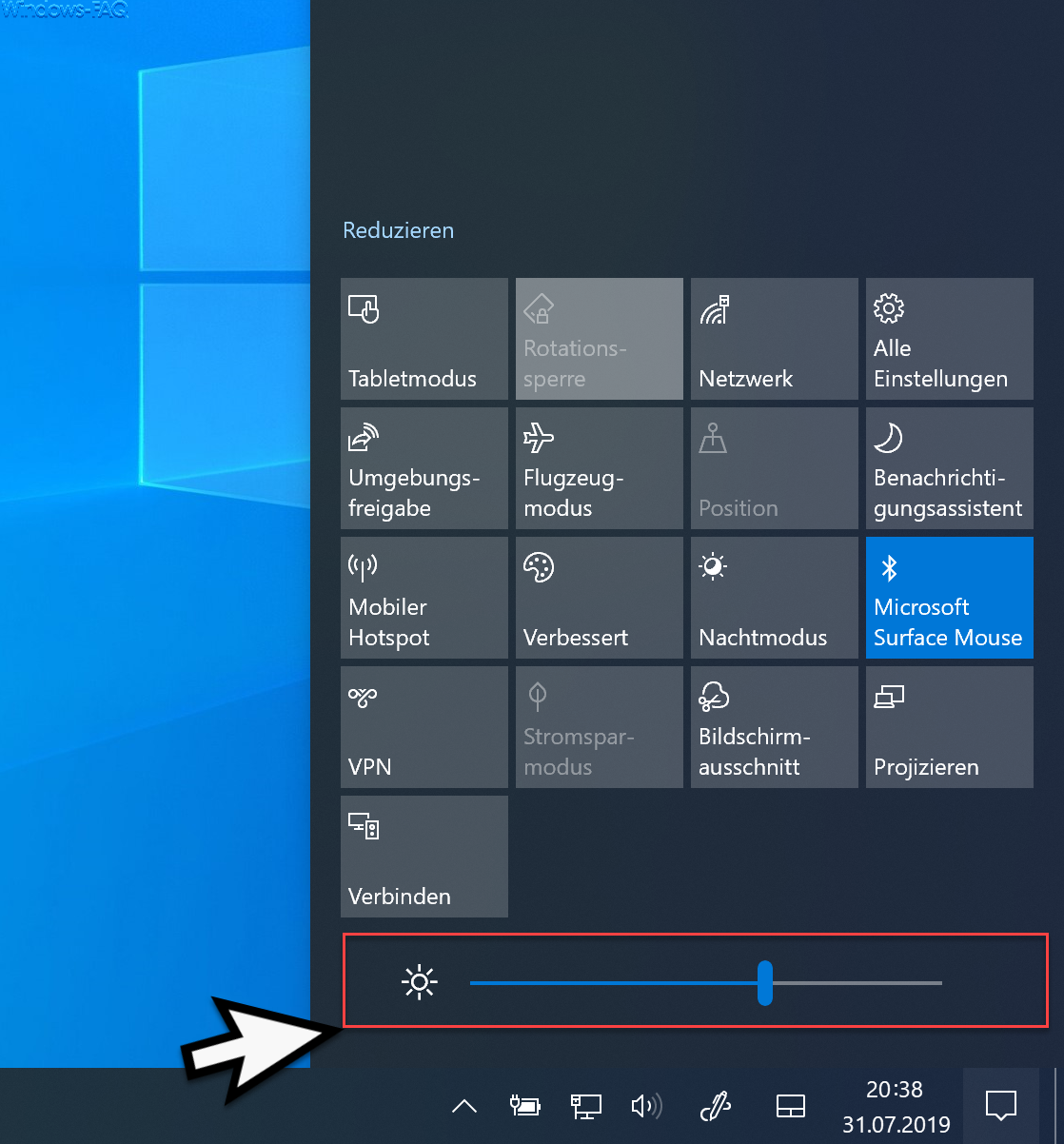
- #SCREEN BRIGHTNESS WINDOWS 10 HOW TO#
- #SCREEN BRIGHTNESS WINDOWS 10 UPDATE#
- #SCREEN BRIGHTNESS WINDOWS 10 PC#
- #SCREEN BRIGHTNESS WINDOWS 10 WINDOWS#
This acts the same way as the slider bar in method 1. What we are looking for is the brightness slider. Here you will see some options like Network and Bluetooth.
#SCREEN BRIGHTNESS WINDOWS 10 WINDOWS#
Method 3: Adjusting with the Action Center Instead of going into settings, use the keyboard shortcut.īring up the Action Center by pressing the Windows Key + A simultaneously. And the other will read Help improve battery by optimizing content shown and brightness. One will read Change brightness automatically when lighting changes.

In this little menu, there are two checkboxes. Check both boxes select both of these boxes for optimal results.

Next to where we used the brightness slider in method 1, there is a downward-facing arrow. Click on the Brightness For this method, click on that arrow to reveal two options. Select System, then Display Display should be the very first option on the list.īy default, the System option should be showing on the settings screen, but if not, select System on the left-hand menu. 1: Press the Windows Key + I To quickly bring up the settings menu, press the Windows key and I simultaneously. To change screen brightness, follow the first two steps of Method 1, but the third step will vary. Use this slider to adjust the brightness of your screen. In the Display menu, you will see a blue slider bar across from the word Brightness. Use The Brightness Slider Moving the slider to the ight will dim the screen, and to the right will make it brighter. Then select Display which should be the very first option on the list.

Select System, then Displayīy default, the System option should be showing on the settings screen, but if not, select System on the left-hand menu. Method 1: Change In Settings 1: Press the Windows Key + I Press the Windows key and I at the same time to bring up the settings menu. If you are on a Windows desktop, you can follow the same steps for a similar result.
#SCREEN BRIGHTNESS WINDOWS 10 HOW TO#
If you’re unsure, don’t worry our guide will show you how to change brightness on Windows 10.īefore we start, we want to point out that these methods mainly apply to laptop use. Knowing how to adjust the screen brightness on your Windows computer is vital for your eye’s health.
#SCREEN BRIGHTNESS WINDOWS 10 UPDATE#
Press and hold (or right-click) the display adapter name, then select Update driver and follow the instructions.Screen brightness is one of the leading causes of eye strain and headaches. In Device Manager, select Display adapters, then select the display adapter. In the search box on the taskbar, type Device Manager, and then select Device Manager from the list of results.
#SCREEN BRIGHTNESS WINDOWS 10 PC#
If you don't have a desktop PC and the slider doesn't appear or work, try updating the display driver. To find the brightness slider in earlier versions of Windows 10, select Settings > System > Display, and then move the Change brightness slider to adjust the brightness. The Brightness slider appears in action center in Windows 10, version 1903. To change the brightness on an external monitor, use the buttons on it. You might not see the Change brightness for the built-in display slider on desktop PCs that have an external monitor. Even if you use it, you can still move the Change brightness for the built-in display slider to fine-tune the brightness level. This automatic setting helps make sure your screen is readable wherever you go. Under Brightness and color, look for the Change brightness automatically when lighting changes check box, and then select it to use this feature. To find out if your PC supports this, select Settings > System > Display. Some PCs can let Windows automatically adjust screen brightness based on the current lighting conditions. (If the slider isn't there, see the Notes section below.) Select action center on the right side of the taskbar, and then move the Brightness slider to adjust the brightness. For more info, see Adaptive brightness and contrast in Windows. Some Windows PCs can automatically adjust the screen brightness and contrast based on content that’s displayed on your built-in screen.

You might also see another check box displayed: Help improve battery by optimizing the content shown and brightness. Even if you use it, you can still move the Brightness slider to fine-tune the brightness level for a built-in display. Select Brightness, look for the Change brightness automatically when lighting changes check box, and then select it to use this feature. To find out if your PC supports this, select Settings > System > Display. (If the slider isn't there, see the Notes section below.) Select the Network icon on the right side of the taskbar, and then move the Brightness slider to adjust the brightness.


 0 kommentar(er)
0 kommentar(er)
